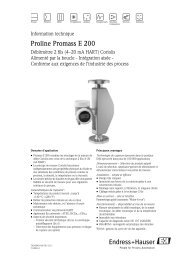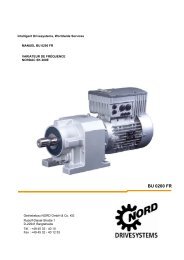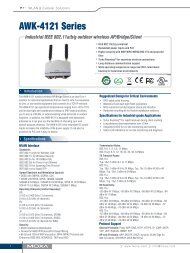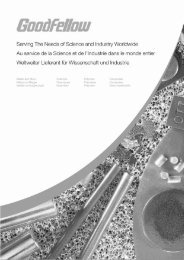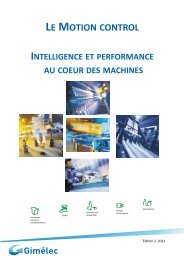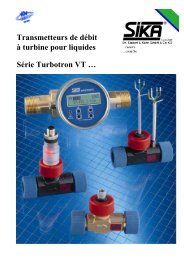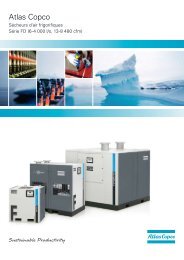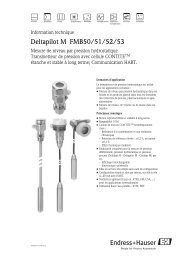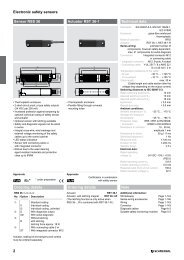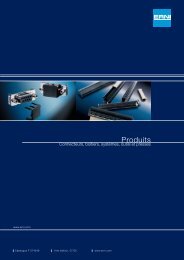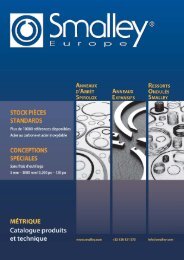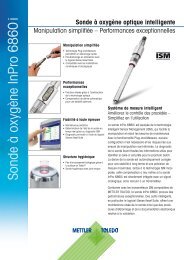Flexible Heaters Design Guide - BiS Sistem
Flexible Heaters Design Guide - BiS Sistem
Flexible Heaters Design Guide - BiS Sistem
Create successful ePaper yourself
Turn your PDF publications into a flip-book with our unique Google optimized e-Paper software.
Selecting a Minco Heater<br />
Introduction <strong>Design</strong><br />
<strong>Guide</strong><br />
Polyimide<br />
<strong>Heaters</strong><br />
Silicone<br />
Rubber<br />
<strong>Heaters</strong> (foil)<br />
Standard<br />
Polyimide<br />
& Rubber<br />
Rubber<br />
<strong>Heaters</strong><br />
(wire-wound)<br />
Mica <strong>Heaters</strong> Thermal-Clear<br />
<strong>Heaters</strong><br />
All-Polyimide<br />
<strong>Heaters</strong><br />
Sensors,<br />
Controllers &<br />
Accessories<br />
Reference<br />
1. Choose insulation type<br />
Pick from the available insulation types. When selecting insulation consider temperature range, maximum resistance<br />
density and maximum heater size. Insulation options are available on page 7.<br />
2. Choose installation option<br />
Proper installation is crucial for optimal heater performance. Determine the best method to install flexible heaters in your<br />
application so you can achieve desired results in your thermal system. Minco installation options are available on page 8.<br />
3. Calculate required wattage<br />
The heater you select must produce enough power to (1) warm the heated object to control temperature in the desired time and<br />
(2) maintain that temperature.<br />
The specific heat formula on page 10 gives an estimate for warm-up, assuming all heat enters the object and none is lost.<br />
Add at least 20% to account for unknown losses.<br />
Heat loss factors include conduction, convection, and radiation. A more accurate wattage estimate will take these into account.<br />
For a general discussion of heat loss, download Minco White Paper "Estimating Power Requirements for Etched-Foil <strong>Heaters</strong>."<br />
Also helpful is Thermal Calc, an online tool to assist with calculations. Both are available at www.minco.com/e2e.<br />
4. Select a Minco stock or standard heater<br />
Select from the hundreds of available heater sizes in this guide that will best fit your application. Multiple resistance options will<br />
allow you to carefully manage your heat output.<br />
Ohm’s Law<br />
A Thermofoil heater has a specific resistance. Its power output, in watts, depends on supply voltage (P=E²/R).<br />
R<br />
Ohms (Ω)<br />
E E 2 P<br />
I P<br />
2<br />
I<br />
P<br />
Watts (W)<br />
E I<br />
I 2 R<br />
E 2<br />
R<br />
I<br />
Amps (A)<br />
P<br />
R<br />
E<br />
Volts (V)<br />
P<br />
PR<br />
I<br />
5. Test and prototype<br />
The best way to make a final determination of heat requirements is by experimentation. See page 10 for tips, or download<br />
Minco's white paper entitled "Prototyping Techniques for Etched-Foil <strong>Heaters</strong>," available at www.minco.com/e2e.<br />
Heater selection examples<br />
P<br />
E<br />
E<br />
R<br />
Desired temperature 60°C 100°C 100°C (same as left) 150°C<br />
I R<br />
Power required 300 W at 115 V 500 W at 240 V 2500 W at 480 V<br />
Heater size 3" × 6" (76.2 x 152.4 mm) 2" × 10" (50.8 x 254 mm) 9" (228.6 mm) diameter<br />
Ideal resistance 115²/300 = 44.1 Ω 240²/500 = 115 Ω 480²/2500 = 92.2 Ω<br />
Mounting method BM3 shrink band #6 RTV cement Factory vulcanized Clamped<br />
Insulation Polyimide Silicone Rubber Mica<br />
Model chosen HK5468 R46.1 L12 A HR5430 R96.8 L12 A HM6810 R83.4 L12 T2<br />
Effective area 15.74 in² (101.5 cm²) 18.20 in² (117.4 cm²) 58.5 in² (377.4 cm²)<br />
Actual power 115²/46.1 = 287 W 240²/96.8 = 595 W 480²/83.4 = 2762 W<br />
Watt density 287/15.74 = 18 W/in² (2.79 W/cm²) 595/18.20 = 33 W/in² (5.12 W/cm²) 2762/58.5 = 47 W/in² (7.29 W/cm²)<br />
Max. watt density 36 W/in² (5.58 W/cm²) at 60°C 19 W/in² (2.95<br />
W/cm²) at 100°C<br />
36 W/in² (5.58<br />
W/cm²) at 100°C<br />
Wattage density OK? Yes (18 < 36) No! (33 > 19) Yes (33 < 36) Yes (47 < 54)<br />
54 W/in² (8.37 W/cm²) at 150°C<br />
6<br />
Sal es and Support<br />
|<br />
Americas: 763.571.3121 | Europe: (33) 5 61 03 24 01 | Asia Pacific: (65) 6511 3388





